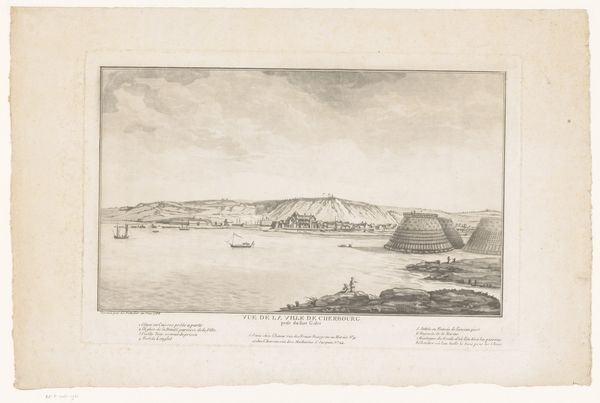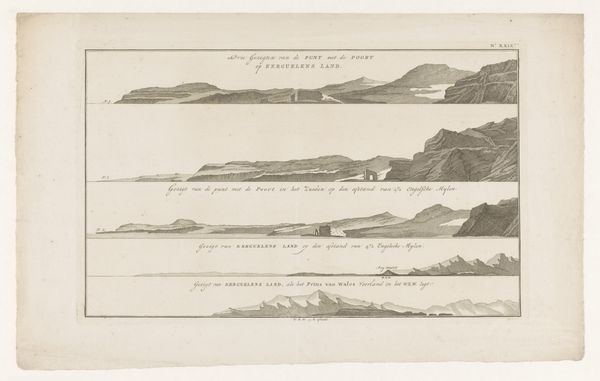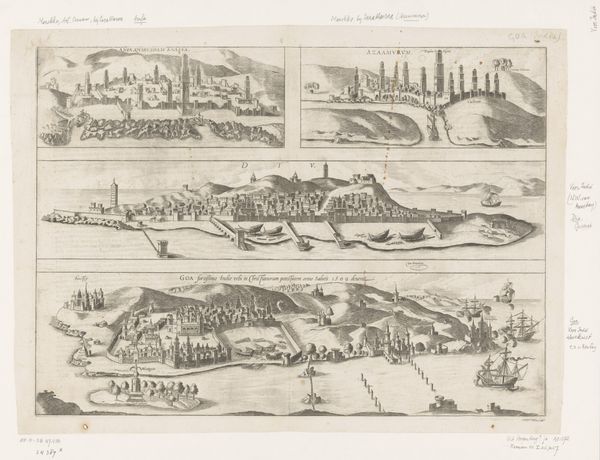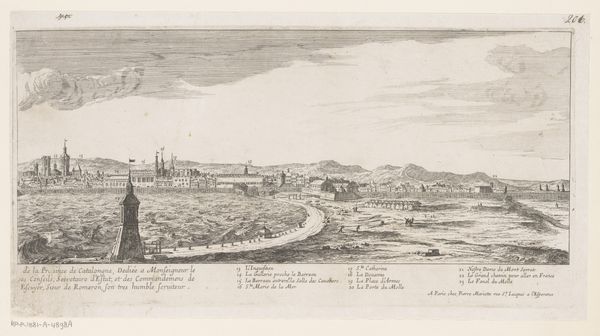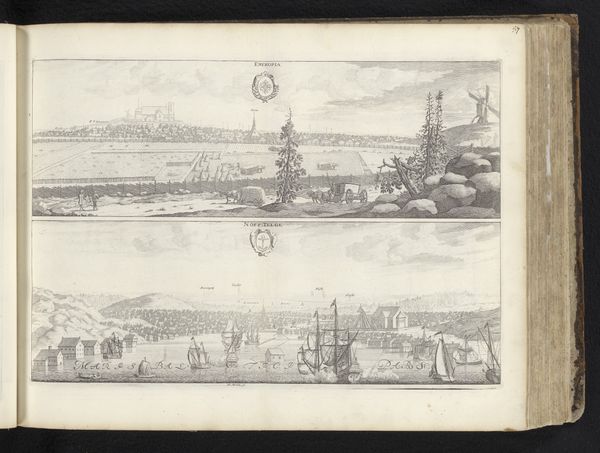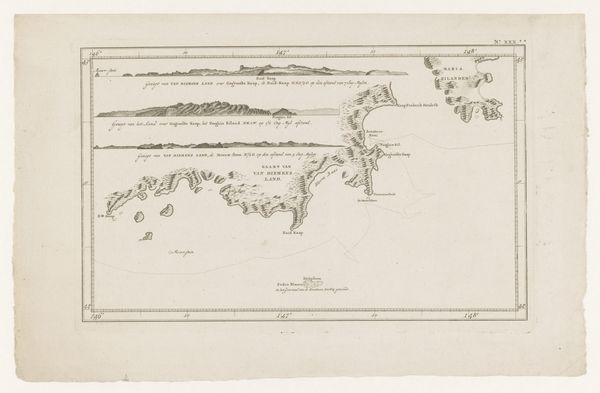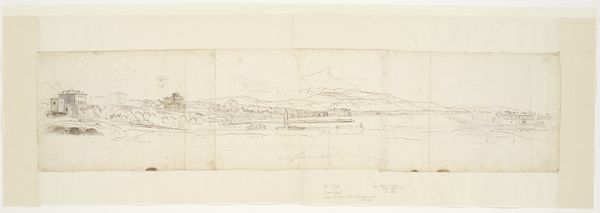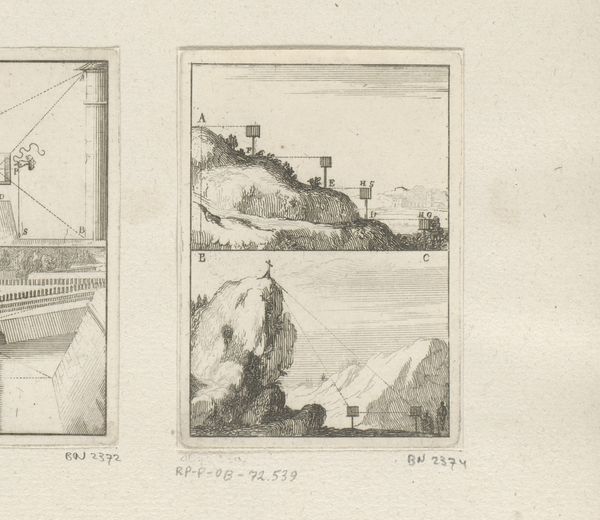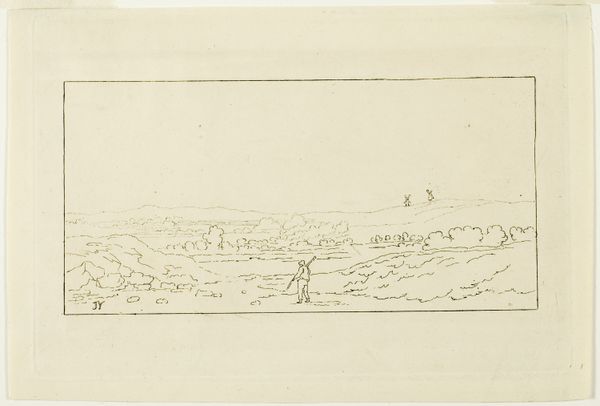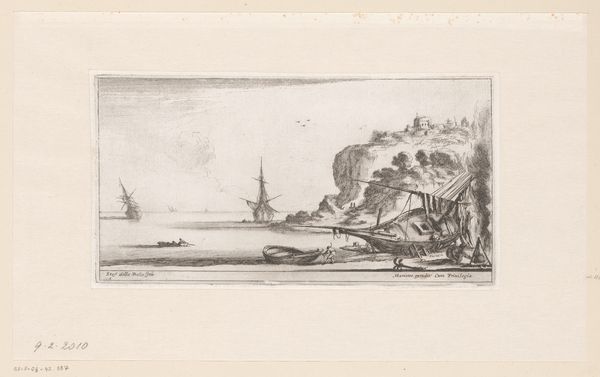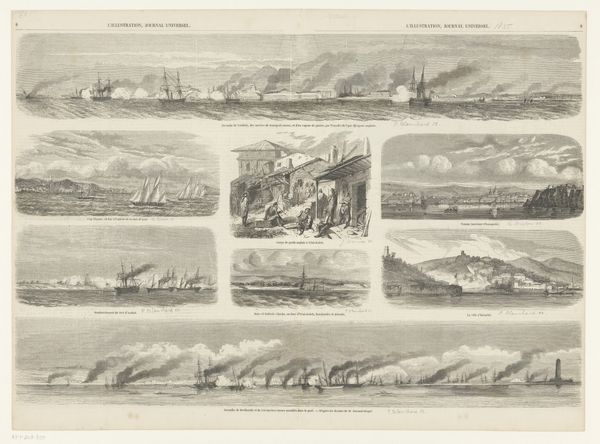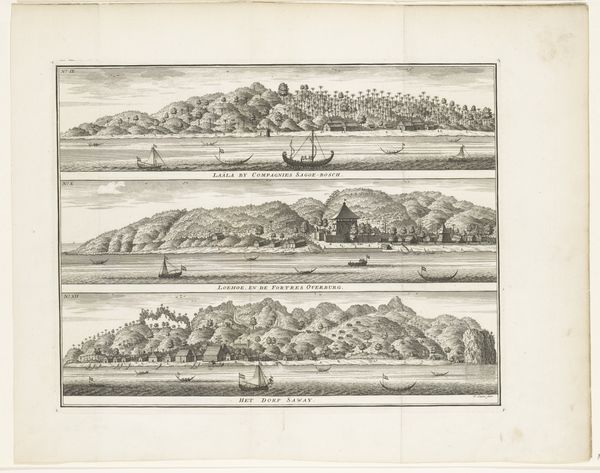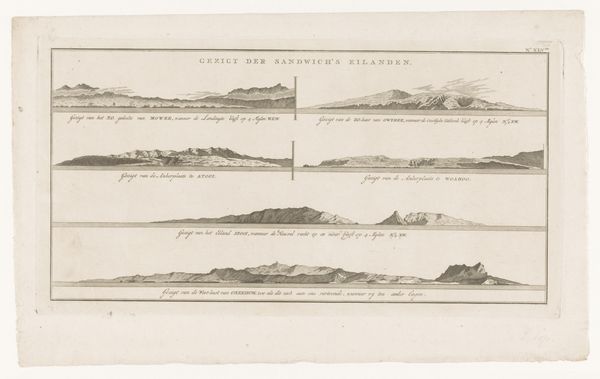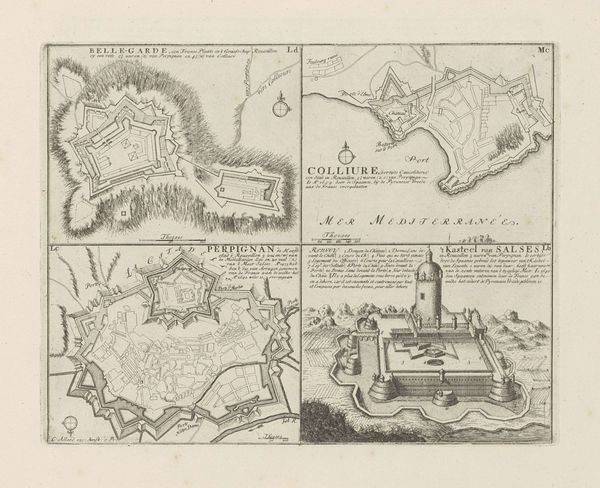
print, engraving
#
baroque
# print
#
landscape
#
cityscape
#
history-painting
#
engraving
Dimensions: height 183 mm, width 285 mm
Copyright: Rijks Museum: Open Domain
Curator: Here we have an engraving from circa 1665 to 1670 titled "Gezicht op Elmina, Cormantijn en het eiland Goeree"—translated as "View of Elmina, Cormantijn, and the Island of Goeree." It is by an anonymous artist. Editor: My goodness, a fleet of ships on what appears to be a pretty somber, even grid-like seascape. Everything's very…organized, but feels strangely cold. Curator: Yes, and formally, it is intriguing because it depicts these various West African coastal settlements important to the Dutch West India Company. The use of the printmaking technique creates this fascinating stark contrast, emphasizing the precision of the architecture and the rigid formation of ships. It's as much a record as it is a composition. Editor: A record indeed! But of what exactly? I mean, look at those meticulous lines of the water... almost mechanical, you know? And all those ships, each identical... They line up like teeth. This doesn't feel like a celebration. It’s almost like an inventory…or a threat. Curator: Well, it's impossible to ignore the historical context here. These were key locations for the transatlantic slave trade. The supposed objectivity might even be a sort of deliberate… masking of something brutal, dehumanizing the complex dynamics into a commercial transaction. Editor: So the emotional register—or lack thereof—becomes part of its message. By showing us, but not telling us. The formal dryness mirrors a deeper moral one? That is quite clever. Curator: I suppose we are left to decide what meanings we take away. Is it celebrating expansion or hinting at the quiet horrors that often travel with ambition and expansion? Editor: And that choice we must face makes it unsettlingly contemporary even today. Thanks to seeing with your eye, and mine, this work can make a sound!
Comments
No comments
Be the first to comment and join the conversation on the ultimate creative platform.
